Charles Mahron at Strong Towns has the step-by-step description:
As the transformation from traditional to auto-centric continues, parking becomes more valuable for those establishments that remain. Commercial businesses that in another era would have been expanded or rebuilt at a grander scale as the community grew are now more valuable being demolished for parking. The same thing is happening to the homes throughout these neighborhoods. They are being taken down in favor of garages and "buffering". Neighborhoods originally designed to define space are now becoming space.
These changes are devastating to the tax base. Where the public has made the greatest investments in infrastructure (and has the greatest obligations for maintenance) the neighborhoods stagnate. But nobody has the job of worrying about the tax base throughout the existing neighborhoods. The traffic engineer worries about moving cars. The public works director runs the utilities and is primarily concerned with new connections. The planner administers the zoning code and is particularly zealous about parking ratios.
This all devolves into a farcical feedback loop. More people driving means that more transportation improvements are needed. There is a greater need to channel cars, to control the flow, to improve the capacity of the transportation system. The more the public realm is given over to cars, the more people must drive. The more people that drive, the more cars on the road. Etc. Etc. Etc. Nobody realizes that we're not actually adding cars. We're all just making more trips.
The whole article is worth a read, and if you like livable cities, will make you sad. There is hope, though: many cities—Chicago, for example—have avoided or reversed the spiral.
Via Gulliver, a Chinese company has built a 30-story hotel in Hunan Province from prefabricated, energy-efficient parts:
From Next Big Future:
The buildings are five times more energy efficient in operation and use about 6 times less cement.
They plan to build one hundred and fifty 30-story apartment building, hotel, office plans using the new system. They have started building a 1.33-million-square meter “NO.1 Sustainable Building Factory” and it will be able to produce 10 million square meters of mass produced skyscrapers each year. The 30 story building is 17,000 m² so the factory can produce about 500 of the 30 story building each year and many more factories will be built.
It did take a while to build the parts that they assembled at the building site, of course. But even then, the building cost 2/3 less than similar buildings to construct.
There is no tomorrow for the island nations of Samoa and Tokelau:
At the stroke of midnight on Dec. 29, time in Samoa and Tokelau will leap forward to Dec. 31 — New Year's Eve. For Samoa's 186,000 citizens, and the 1,500 in Tokelau, Friday, Dec. 30, 2011, will simply cease to exist.
[Samoan] Prime Minister Tuila'epa Sailele Malielegaoi earlier said it would strengthen trade and economic links with Australia, New Zealand and Asia.
Being a day behind the region has meant that when it's dawn Sunday in Samoa, it's already dawn Monday in adjacent Tonga and nearly dawn Monday in nearby New Zealand, Australia and increasingly prominent east Asian trade partners such as China.
"In doing business with New Zealand and Australia, we're losing out on two working days a week," Tuila'epa said in a statement. "While it's Friday here, it's Saturday in New Zealand, and when we're at church on Sunday, they're already conducting business in Sydney and Brisbane."
The islands move from UTC-10:00 to UTC+14:00, and will therefore be the first places on earth to enter 2012.
Tokyo has maps in all the metro and train stations showing where you are and where everything else is. However, throughout the city I found exactly one map where north was on top. Otherwise, they were all oriented in different directions. Here are two maps near Ueno-Koen within sight of each other that illustrate the problem. Exhibit A, with north towards the bottom left:
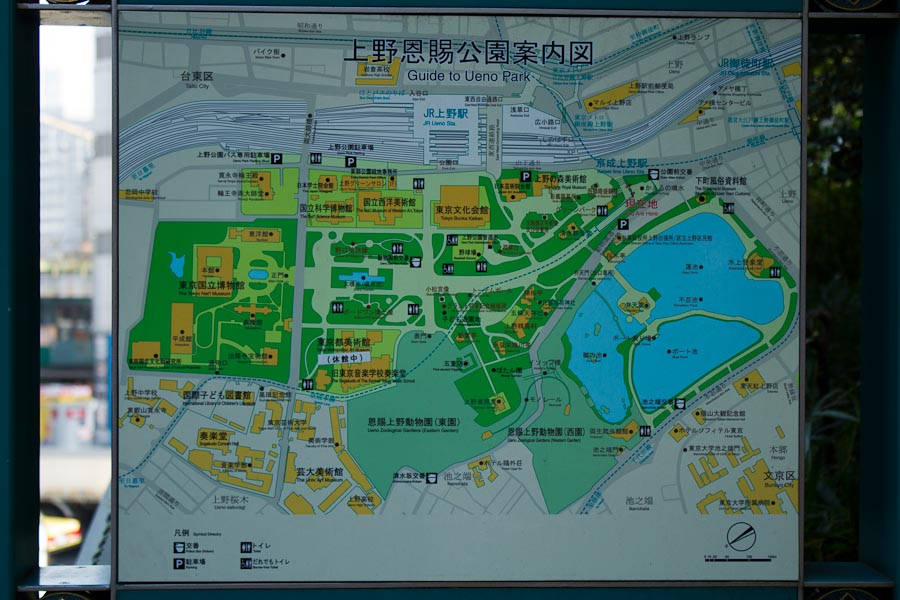
Exhibit B, with north in exactly the opposite direction:
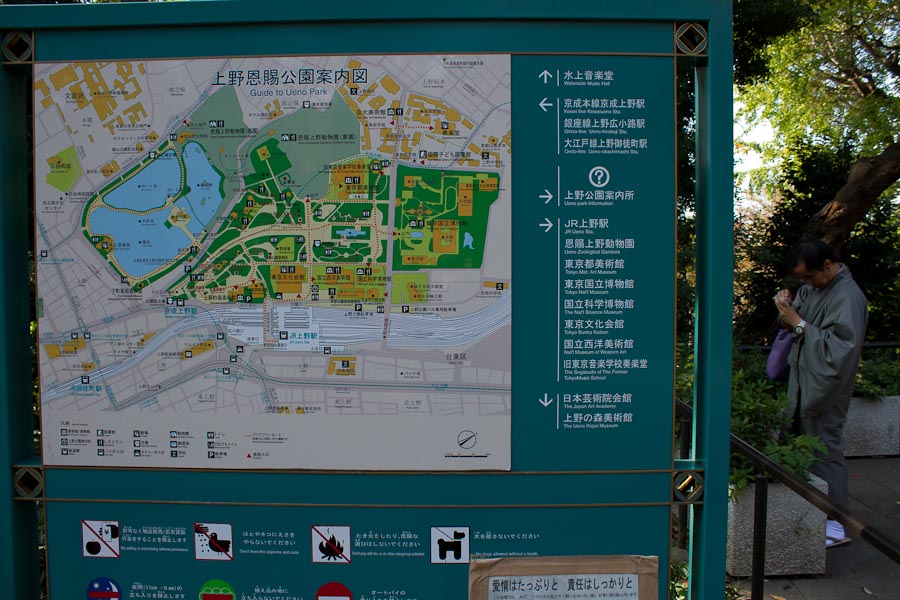
Exhibit C, near my hotel, shows two maps next to each other with completely different orientations:
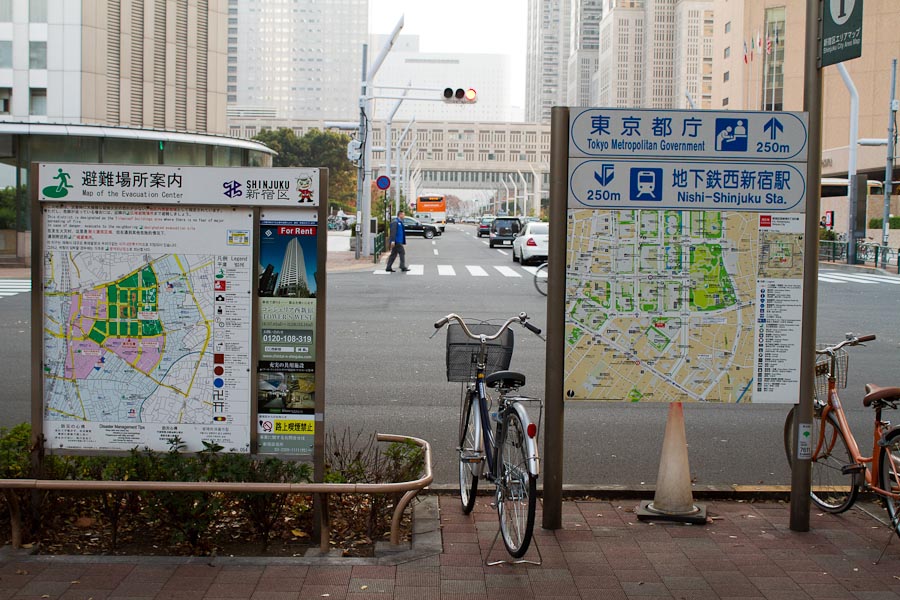
Why does this matter? Because whenever I looked at a map in Tokyo, I always had to spend several seconds figuring out what it represented. And it wasn't as if the orientations followed any pattern, for example showing what happens if you turn right or left from your current position, as the photo directly above shows.
I have no idea what, if any, principles are at work here. It's almost as if every map's orientation is completely left up to occident.
I had planned to visit the Tokyo National Museum today, and possibly one of the other museums at Ueno Park, but then this happened:
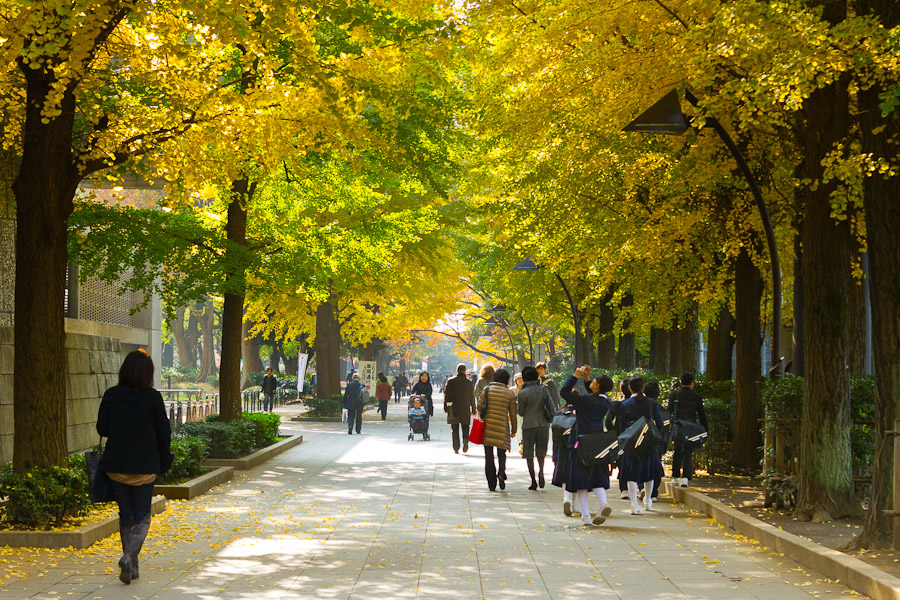
Yes, a sunny autumn day with the temperature passing 21°C simply did not allow me to go inside. I spent a few hours just walking around Ueno-Koen, encountering the local fauna:

More fauna:
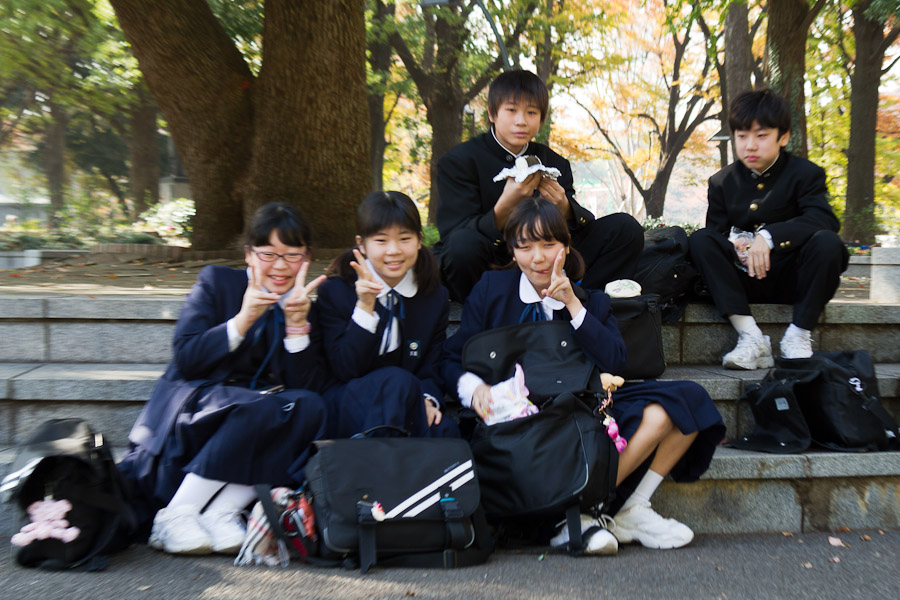
Oh, and hey, my camera shoots video:
(Apologies for the jerkiness; I was hand-holding a 250mm lens.)
Yesterday (er, earlier today in the U.S.), American Airlines filed for bankruptcy under Chapter 11, hoping to reorganize itself into profitability. A few hours after the news, the head of the frequent-flyer program sent out a reassurance to us members:
We want to assure you that your AAdvantage® miles are secure. The AAdvantage miles that you've earned are yours and will stay yours, subject to usual policies, until you choose to redeem them for a great award with us. Likewise, your elite qualifying miles and your elite status, including lifetime status granted under the Million MilerSM program is secure and remains intact. You will continue to earn miles through all our existing AAdvantage participating companies and you will be able to redeem those miles for the same great awards — flights, upgrades, car rentals and hotels just to name a few. And, throughout the coming year, we will be adding even more opportunities to earn miles, as well as new ways to redeem those miles.
(Emphasis in original.)
Of course, the X factor remains the attitudes of the pilots, flight attendants, gate agents, and other front-line employees who stand to lose the most (other than, obviously, bondholders) from the restructuring. I'll keep an eye out—and I'll keep flying American and it's oneworld partners.
In a related bit, private pilot and journalist James Fallows has a lively debate on his blog today about electronic devices on airliners, and how your Kindle most certainly will not crash the plane if you forget to turn it off.
I'm off on my penultimate day of exploring Tokyo. Yesterday I hit the photography museum; today, I think, the Tokyo National Museum.
Yesterday I took the Shinkansen from Tokyo to Kyoto and back. The 476 km trip takes two hours and twenty minutes, averaging 200 km/h including stops.
The best we have in the U.S. over the same distance, the Acela from Boston to Philadelphia (511 km), takes just over five hours on a good day and more if it snows. Chicago to St. Louis (457 km) is scheduled for five and a half hours, but I haven't ever made the trip in under six.
The U.S. made different choices than Japan (or Europe: London to Newcastle, 483 km, takes 2 hours and 50 minutes), because our vast depopulated spaces made an automobile-based infrastructure deceptively appealing. Wouldn't it be incredible if the U.S. experienced some kind of economic situation where it made a lot of sense to start correcting that monumental error? Oh, right.
In any event, I left the Tokyo train station a little past 10 in the morning and got to see this by 2, which is really the point:
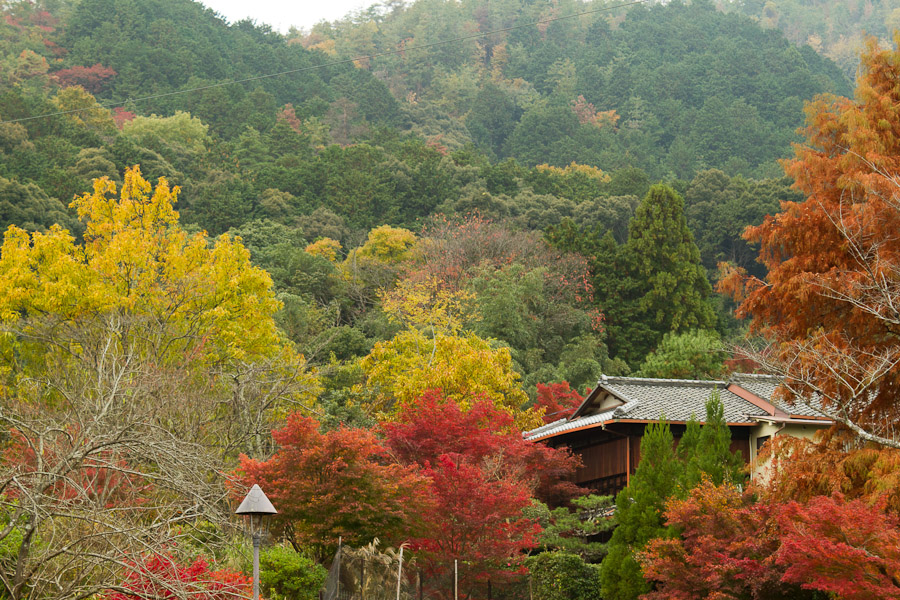
Exhibit 1, a very fast train:
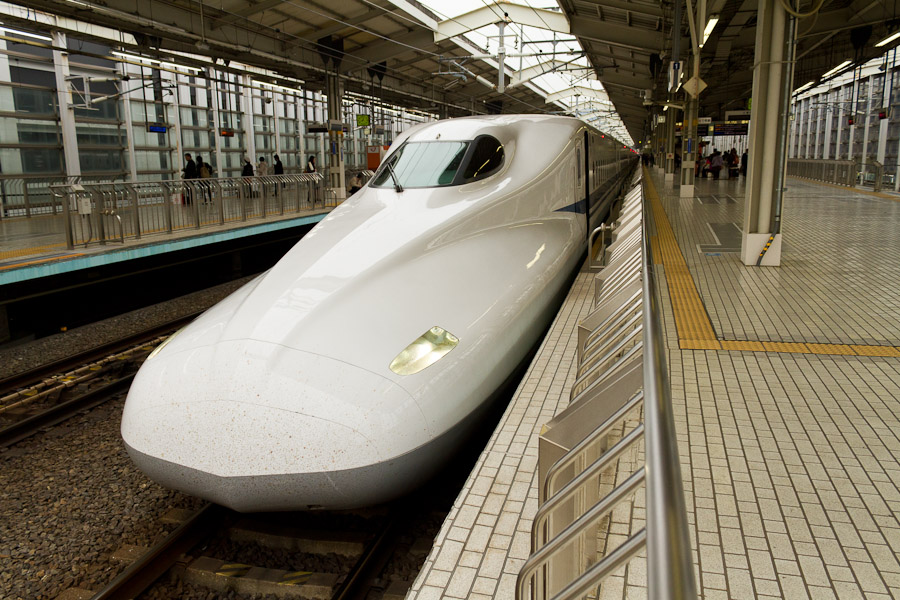
Exhibit 2, autumn at Tenryu-ji, one of 17 UNESCO World Heritage Sites in Kyoto:
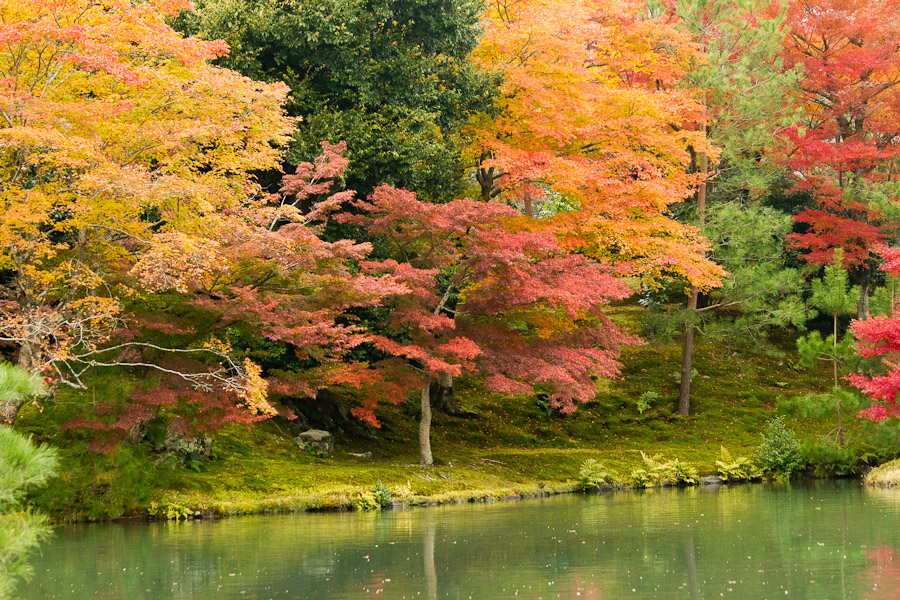
Exhibit 3, a juxtaposition of transportation technologies:
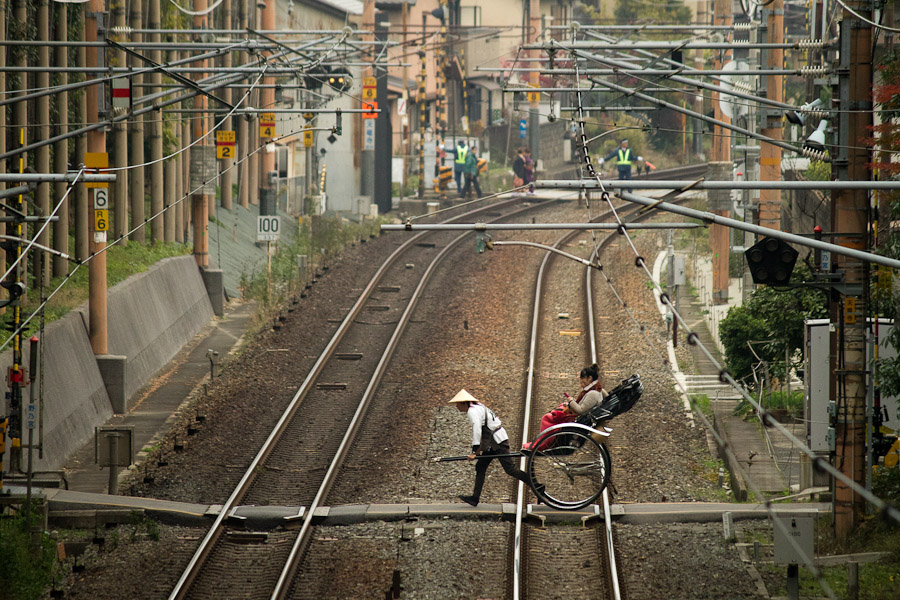
Explanation, to the extent required, follows tomorrow morning.
Every year, the Economist publishes the Big Mac Index, "a fun guide to whether currencies are at their “correct” level. It is based on the theory of purchasing-power parity (PPP), the notion that in the long run exchange rates should move towards the rate that would equalise the prices of a basket of goods and services around the world." The current spot price of a Big Mac in Tokyo today is ¥680: just under $9. Yes, NINE DOLLARS.
This fact might cushion the surprise I experienced this evening when I discovered that four small chicken skewers (yakitori), one medium bowl of rice, and a beer, cost $32.75, including tax. This wasn't at the Tokyo equivalent of Charlie Trotter's; this was at an anonymous izakaya near the Shinjuku train station.
Now, friends and enemies alike will tell you that I routinely spend that much at, say, my remote office. There's a tip, for starters, not to mention the occasional disnumeria after I've spent an afternoon there. Only, at Duke of Perth, that amount goes a little farther.
I've noticed other things beside the angina-inducing prices in this city. In no particular order:
- I stand out. I've traveled all over the world, and in no other city (except possibly Shanghai) do I stick out more obviously than I do here. I find no small irony in that here, people don't know whether I'm American or Albanian; but they know I speak English, they know I'm not from these parts, and they know I'm the most likely person in any crowd to act unpredictably. It's not just me; all European-looking people look out of place here. And we all smile wanly at each other on the streets. It's odd.
- Shibuya at night looks just like you'd imagine, sort of Piccadilly Circus, Times Square, and North Michigan Avenue smashed together and fed amphetamines. I'm glad I had the experience. People who know me will understand how happy I am to report that I have been to the most crowded, most chaotic, and most commercial place I have ever seen (i.e., the Shinjuku train station), on my way to the most crowded, most chaotic, and most commercial place the world has ever seen (i.e., Shibuya Crossing at 5pm). And this was Sunday night. Tomorrow, when both the train station and the shopping area are actually busy, I might avoid it. In fact, since my access to the rest of Japan depends on going through the busiest train station in the world, I may start fantasizing about renting a cabin in upper Manitoba for my next vacation.
Obligatory Shibuya-at-night photo:
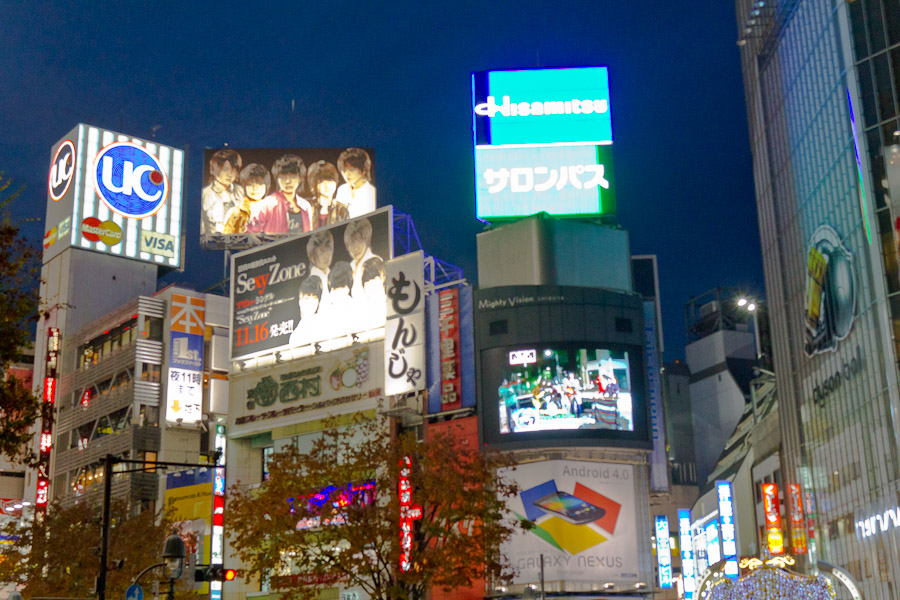
- No one here speaks English, but it doesn't matter. I've encountered none but helpful, patient people for the last two days. The price of dinner tonight may have made my baby cheeses cry, but the wait staff really dug in and helped me find the right words in my little dictionary. They were also enormously impressed that I know how to use chopsticks, which puzzled me, because I haven't encountered too many Americans who can't. Perhaps they thought I was British?
None of these things really bothers me, by the way. Well, all right, the crowds in Shibuya did, but it's Tokyo, so there are crowds, so what? I mean, we don't have this back home:
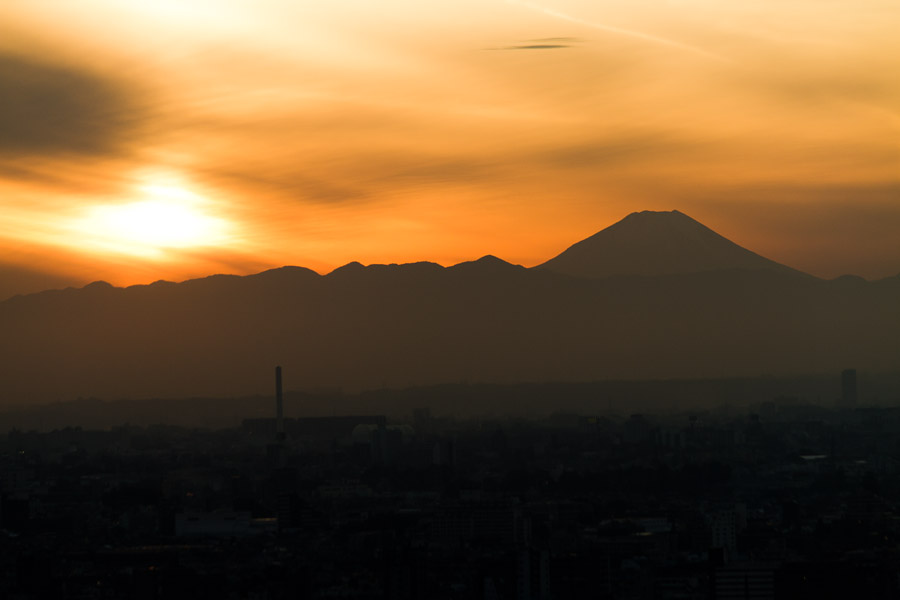
Lonely Planet has by far the most helpful guidebooks in English. Their Tokyo City Guide recommends hopping on the Yamanote train to get an overview of the city. The train goes around central Tokyo in a little more than an hour; when combined with an all-day rail/subway pass (¥1580), it gives you a good overview of the place. Here's the inside (counterclockwise) train pulling into Tokyo Station:
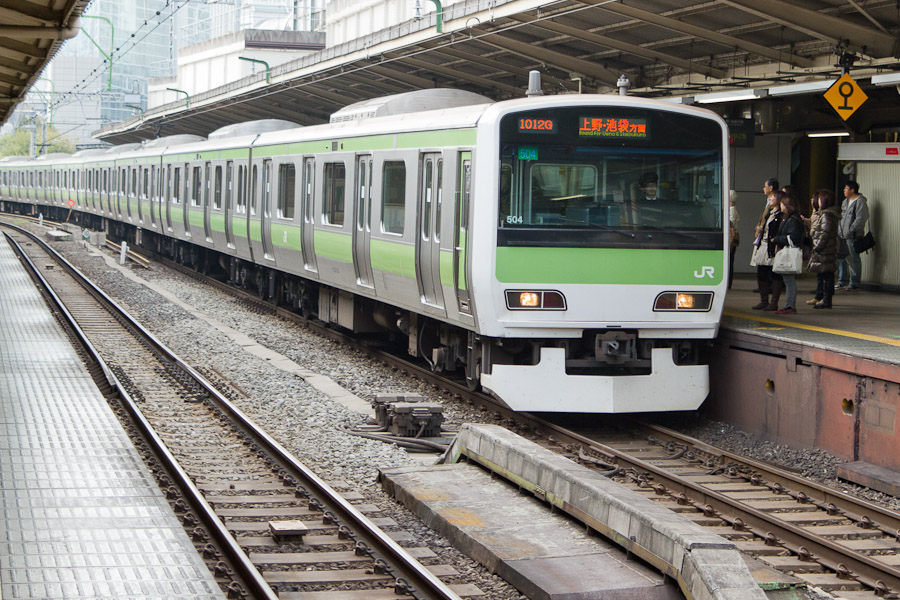
From Shinjuku, I went around to Tokyo Station, and walked over to the Imperial Palace. You can't get near the place, really; there's even a moat around it, in case of siege engines. I did wander the outer garden, dodging bicycles and Japanese tourists, and finding an unusual (for me) number of people doing watercolors:
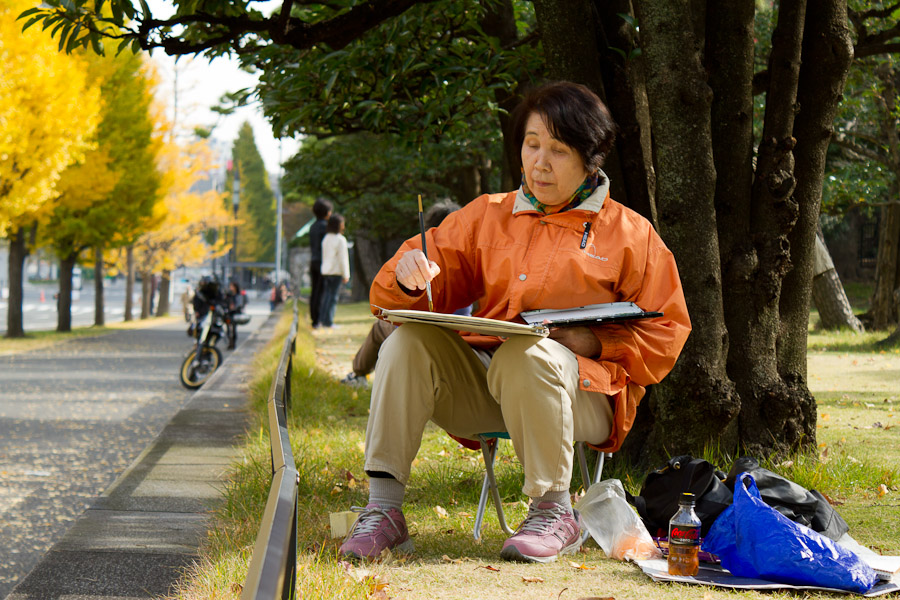
Back to Tokyo Station for lunch in one of the crowded food courts, where I sampled three different kiosks and only bit into one thing I didn't like. (I must remember to ascertain what part of the chicken is on the teppanyaki stick.)
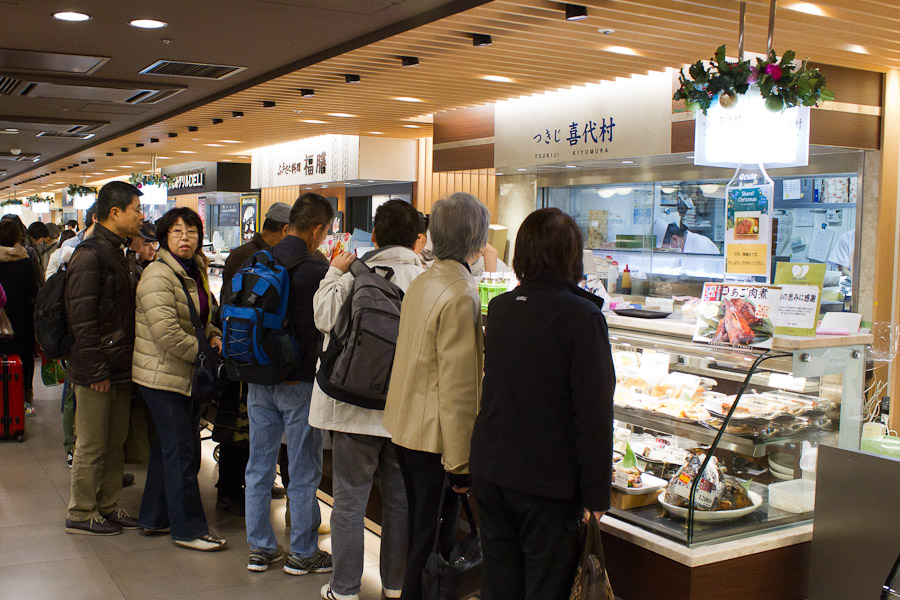
I decided not to try these, however; $15.50 was just too expensive:
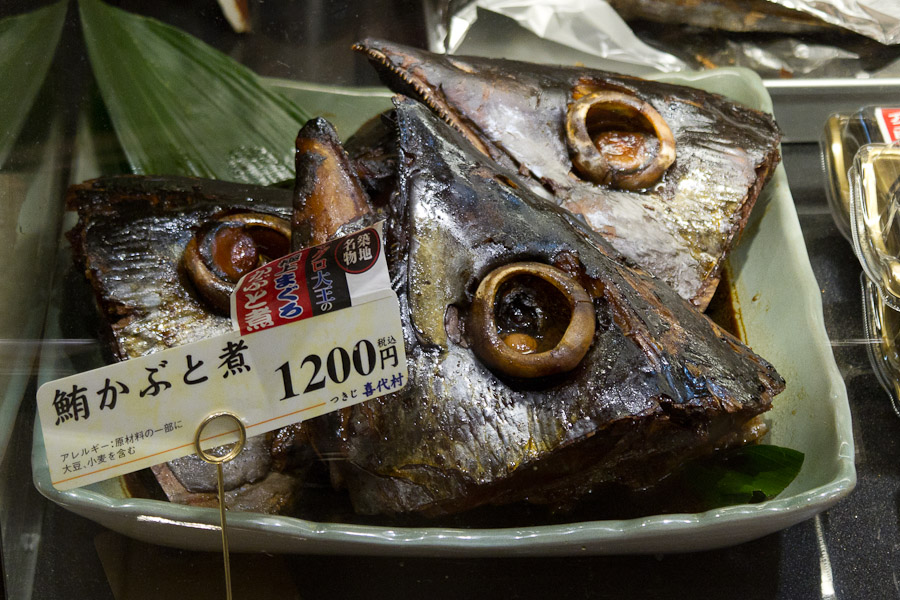
After lunch I continued on the Yamanote train to Shibuya, which everyone who's ever seen a photo of Tokyo has seen. I plan to head back there around sunset to (a) get photos of it at night and (b) eat dinner in one of its thousands of little restaurants. Stand-up sushi, maybe? Itadakimasu!